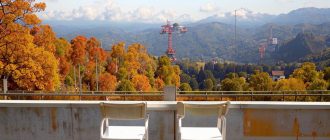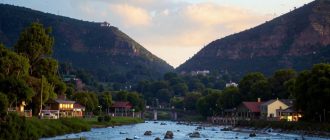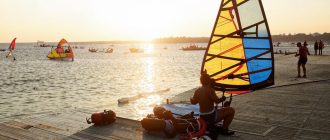Hi everyone! Here is strictly my opinion about another trip within the Silk Road rally-raid. This is a pool of advice and a certain amount of experience, which I gained hot days and icy nights in the south.
Cities visited: Grozny, Astrakhan, Elista, Volgograd.
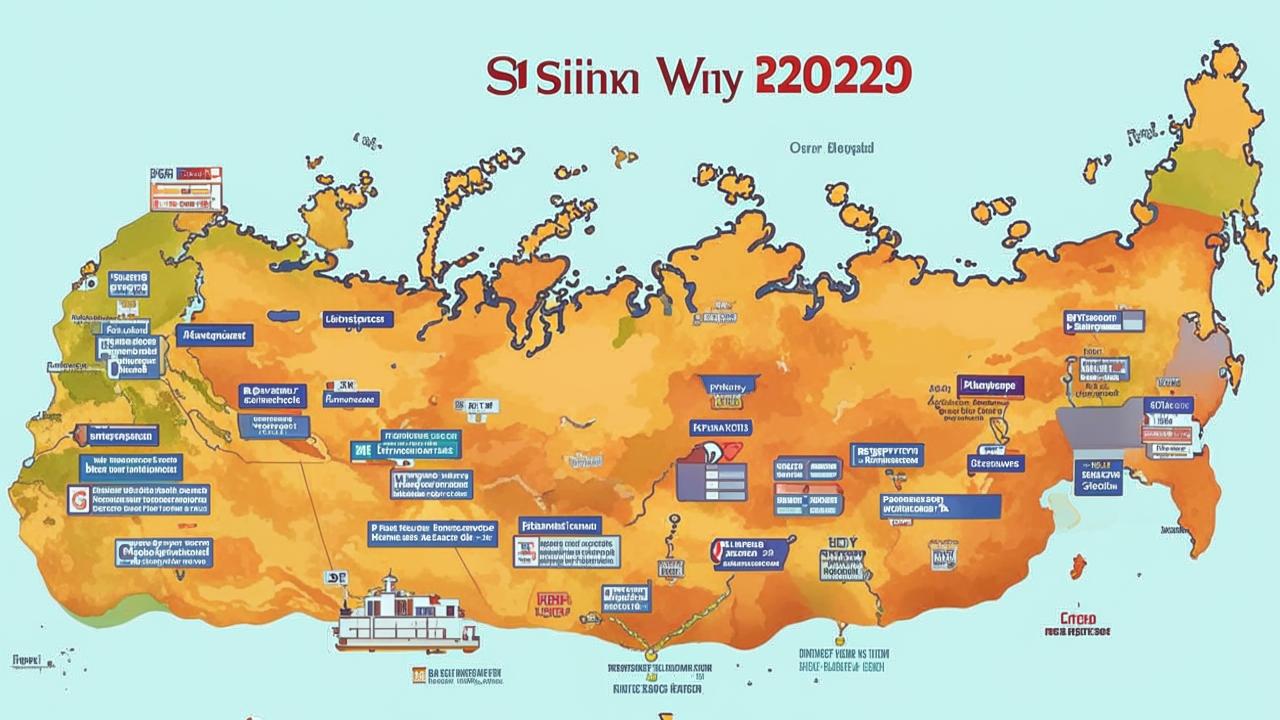
The route of the “Silk Road”
What is important to remember before the trip
Iron is not to blame for anything. If you feel comfortable to vent your emotions on the car, get rid of this bad habit. It’s your main ally, which will quickly become your main enemy if you don’t treat it properly. Therefore, the responsibility is only on the person servicing the car.
The car must be fully technically sound. This is a basic and kind of understandable rule. But it is also such a crystal absolute, which everyone neglects – “let it rattle, let it rattle”, “who cares, I will pour water instead of antifreeze”, “oh, the lambda is badly welded there from the last owner, it’s okay, it drives” and so on. This is the first step to the abyss. Army instructors or, for example, professional high-altitude mountaineers can confirm that any problem, even a small one, turns into a huge one at the speed of light. Because on a trip you will be on your own, without car service 24 hours with your favorite latte, without brother Vazgen, who “for 500 does the whole tire”, without friendly gas station attendants at “Gazprom”, who monitor what and how they pour into your tank. There’s you and whoever’s next to you against everything. And a small squeak in the rear gearbox with a slight movement turns into replacement of the semi-axle alone in 40-degree heat in the steppes of Kalmykia.
You must know your car and not be afraid of manual labor. You do not need to be a professional mechanic, but all basic operations, knowledge of the principles of operation of key units and minimal repairs in the field will be necessary. Download to your phone, or better print out (if you don’t have one, and most likely you don’t) the manual for your car, scour the Internet for its basic “sore spots”.
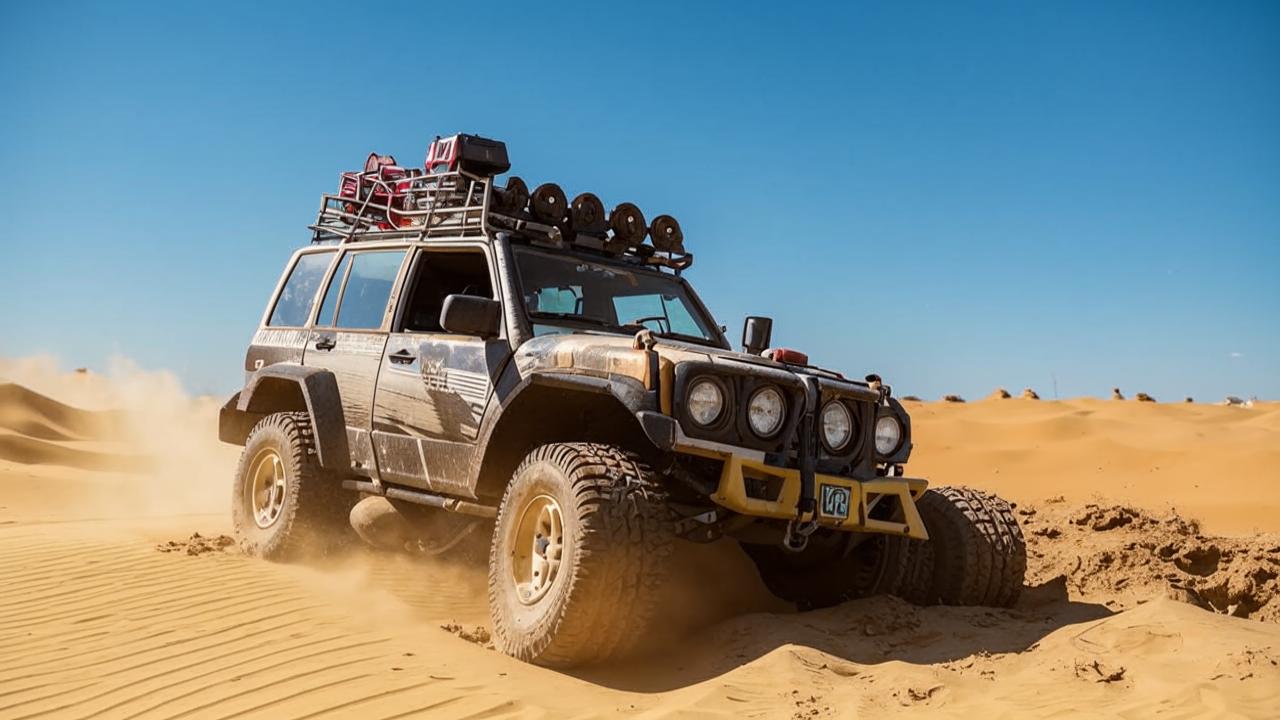
Which car is best to drive and why
Let’s divide all cars into three categories: they fit perfectly (ideality), fit, but there are nuances (with nuances), and do not fit at all (nope). I should note at once that in the case of these trips I sincerely advise diesel rather than gasoline. In Dagestan and Chechnya there is a big problem with fuel (we had a clogged nozzle on a broadcast KamAZ, on a huge, almost tank diesel), a heavy-fuel motor will tolerate low-quality diesel more gently. Plus you have to cover long distances, there are not many gas stations, even near Tambov. We covered on diesel L200 600 km on one tank, and to take off at least one headache is already good. And do not ride “on the bulb”, take canisters.
Attention! We are talking not only about traveling on public roads, but also about going to dirt roads, or even to fields/hills/steppes/solonchaks, to the most picturesque or interesting places (in a piece of Kalmykia the road is a rutted dirt road with pieces of asphalt mixed with concrete and coarse gravel).
Nope
Let’s start with those cars that have no place here: city hatchbacks, low station wagons, everything that stans, everything that is not four-wheel drive, sedans, convertibles, limousines.
A tow truck from Grozny, for example to Moscow, will cost you the price of the car that is traveling on this tow truck.
Nuances
First of all, let’s talk about the legends of European tourism – about touring cars (“universal”, “shed”, “hearse”). Unfortunately, BMWs – all their touring cars – fall off the list at once. What modern, that generations of 90th, too low for a landscape of the south. And even despite the simplicity of repair and maintenance, reliability and quality of Bavarians, they have nothing to do in these places. “Mercedes-Benz” – the old “wolfpack” and “600” touring cars can surprisingly survive the trip. But only if nothing important, what the Stuttgart cars are stuffed with, doesn’t fall off on the way.
With modern models everything is more complicated – air suspension, on the one hand, has a huge advantage, on the other hand – it will not be a problem to tear the cylinder on bushes and sharp stones of steppe. Plus all the same it is automobiles for city operation, it is impossible to repair in the field packed with modern electronics Ts-shka-“shed”, and even after this trip you will be charged for service not small. Well, and you will lose the fun to chase like an eel along the steppe with a heap of dust behind the cars and with wild hooting yelling: “Remember me!”. All in all, not much of a choice.
And then to the third giant, Audi. It’s more complicated than that. The old “freak” Allroad is a great car, which has a big problem with pneumatic, but with sufficient maintenance it will perfectly cope with the task of the south.
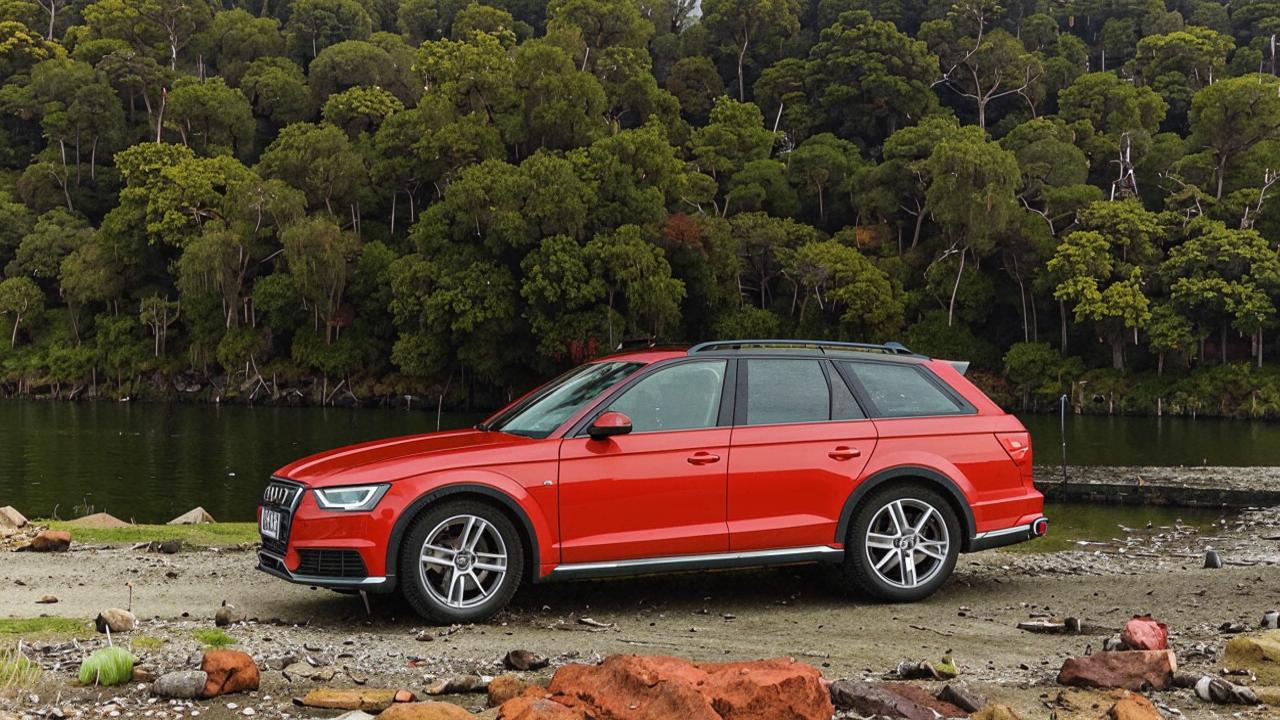
Oh, and it’s a great car in general. But. There will be exactly the same problem as in all presented in this category of cars – the complexity of repair. In Grozny there is not everything (it is very far), in Elista – even less. And if in conditional Volgograd and conditional Astrakhan it is still realistic to find some relay or a piece of assembled wiring (on the worse end, a specialist, a Tatar sitelts, who for 10 hours will tighten and repair you all the braids on L200 – it is checked by experience), then to patch up “Avdotya” in Elista can become an impossible test. It is also worth remembering about fuel – in the regions of the Caucasus, both solara and benzak are disgusting and often lead to breakdowns of the fuel system in any of its elements. And sometimes Ingolstadt engines, suffering from reliability, risk to give up somewhere near Gudermes.
Let’s move on to off-road station wagons and parkettes. Let’s start with legendary cars – Subaru Forester of previous generations. I would say that it is an excellent decision, excellent suspension, size, strong electrics. But: fuel plus maintainability. To find a specialist on turbocharged opposites in the sands of Astrakhan or to try solo to hang up the engine on a serpentine to blow out plugs or change injectors is almost impossible task for an ordinary car traveler.
The turbo engines in this region are a misfortune. They fail quite often: either because intercoolers do not cope with temperature (about it later), or from sand and insects, which clog everything possible, or the change of pressure and rarefaction of air in the mountains make turbines simply fold into scrap metal.
“Parketnik” seems like a good solution, but… no. Here the joker of “universality” in the city turns into “inferiority” of the class in difficult conditions. The size is neither here nor there, all-wheel drive is not always honest, the engine is not ready to overheats, the box is not ready to driving rhythm, and all advantages of a metropolis resident become a burden and a problem in the south. But, by the way, not always in the North. If you want a similar set of information about northern travel – write in the comments.
In general, it’s like throwing a marketing director into the jungle. He will tell about SWOT-analysis and PR-strategies only to anacondas and pygmies. And they’ll eat him for it.
No one says he is a bad specialist, he just doesn’t understand anything about the jungle.
Ideality
The most pulpy part is actually as simple as three rubles. More precisely, like three magic letters that every man wants to hear: TLC – Toyota Land Cruiser, Cruzak. 80 or 100. Automatic, gasoline plus gas or diesel. Para-para-pam – everything.
Other options that you can get a buzz from in the region are Mitsubishi Pajero 3-4, Mitsubishi Pajero Sport 1-2, Mitsubishi L200, Toyota Hilux 3-4, Jeep Cherokee XJ, Nissan Patrol Y60/61, Nissan Navara.
The key thing is that in preparation these are all very reliable vehicles. I personally closed this trip mostly on the L200, which was given to us in very poor condition. That said, the vehicle was able to run all the routes both off-road and on the highway despite the shaft of breakdowns we had. We were incorrectly laid the rear electrics braid, which as a result shorted to ground (how we didn’t burn up is a mystery), the story about the Tartar sitter and the night electrics disassembly is from there. The wheels that the owner gave us were “cut” – this is when new tread is cut on the zeroed rubber(never do that!). As a result, we lost one wheel during the ferrying, the second almost burst right in front of the tire repair shop; the “grenade” of the right front wheel knocked after the first trip; the brake pad jammed, and then apparently squeezed out the piston, we did not disassemble it, but the ringing of metal hitting metal accompanied us all the way from Grozny to Moscow. And our favorite – problems with the cooling system, faulty radiator and intercooler, problems with pressure. And despite all this, the car made it to Moscow, having spent exactly 10 hours in the repair zones, and that before the start of the race.
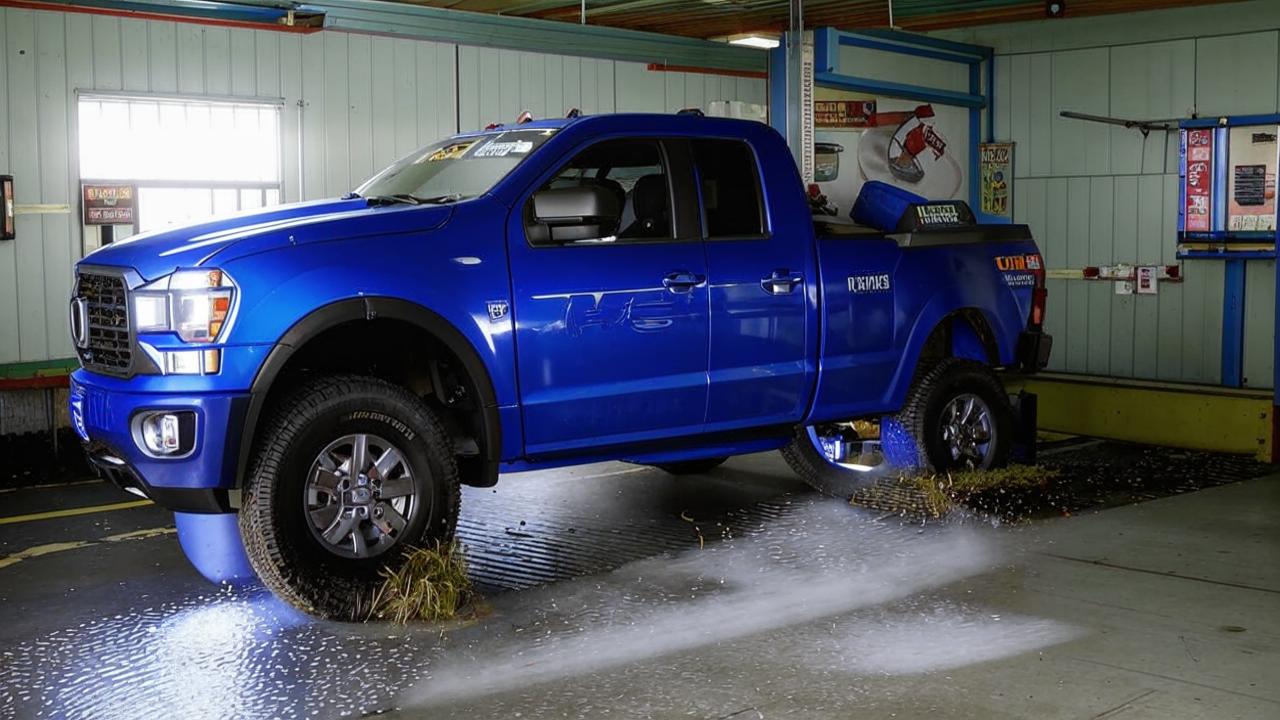
Mitsubishi L200
What breakdowns can wait on the way
Tires and disks. The cars we are talking about here, give quite a lot of force on wheels, well, and the roads in the south are not always good. Even if you go on the sort of normal old M4, you get the magical rubber-on-sandpaper effect. The wheels tear. Balance, check the disks, take reserve rubber. On tires I can advise time-tested All Terrain from Michelin and Bridgestone (I prefer “Bridges” myself). On disks – steel, without hubcaps, if there is a lot of money – specialized, although we passed normally and on the basic ones from L200, but made microcracks on them.
Fists, hubs, the whole inside of the wheel. It’s the same story – the wheels will bear most of the load. Be sure to check the brake system tubes, or better yet, change them for new ones, replace the pads before the trip, lubricate and service the ball joints and gearboxes. Don’t neglect the flip/flat – tire shops, unlike gas stations, are plentiful and everywhere.
Suspension and steering. Again, from what we encountered – bent the panar rod on one of the cars, on one of the “eighties”, after an unfortunate blow after the front axle hang out bent the steering rack, fighting “Nivas” lost the levers only in a way (but there and the levers are such themselves by design), the ball joints are clogged with fine dust from solonchaks and steppes. Before a trip it is desirable to remove, lubricate, install back.
Cooling system. If you go in summer (I drove July 6-16), get ready that the motor will have a hard time. In Grozny, the radiator on the 80th Cruzak burst (the plug was jammed, and the radiator was clogged with grass), and the thermostat in the L200 just lived its own life. When we climbed to the altitude, apparently, the leaky cooling system gave errors, it worked or not, the intercooler was clogged, the heroic pilot straightened and cleaned it with his hands, and after the jump we found a fistula in one of the tubes. From funny – the constructional problem of Mitsubishi pickup with low location of expansion tank turned out to be actually a consequence of reconstructed “face” after a frontal impact, about what the owner of the car our crew decided not to warn. But the main thing is that plus 40 in Chechnya and Dagestan in the mountains is a test for both man and “iron”. Watch the temperature, open the hood at parking lots, in critical situations – remember the trick with the heater to reduce the temperature of the system.
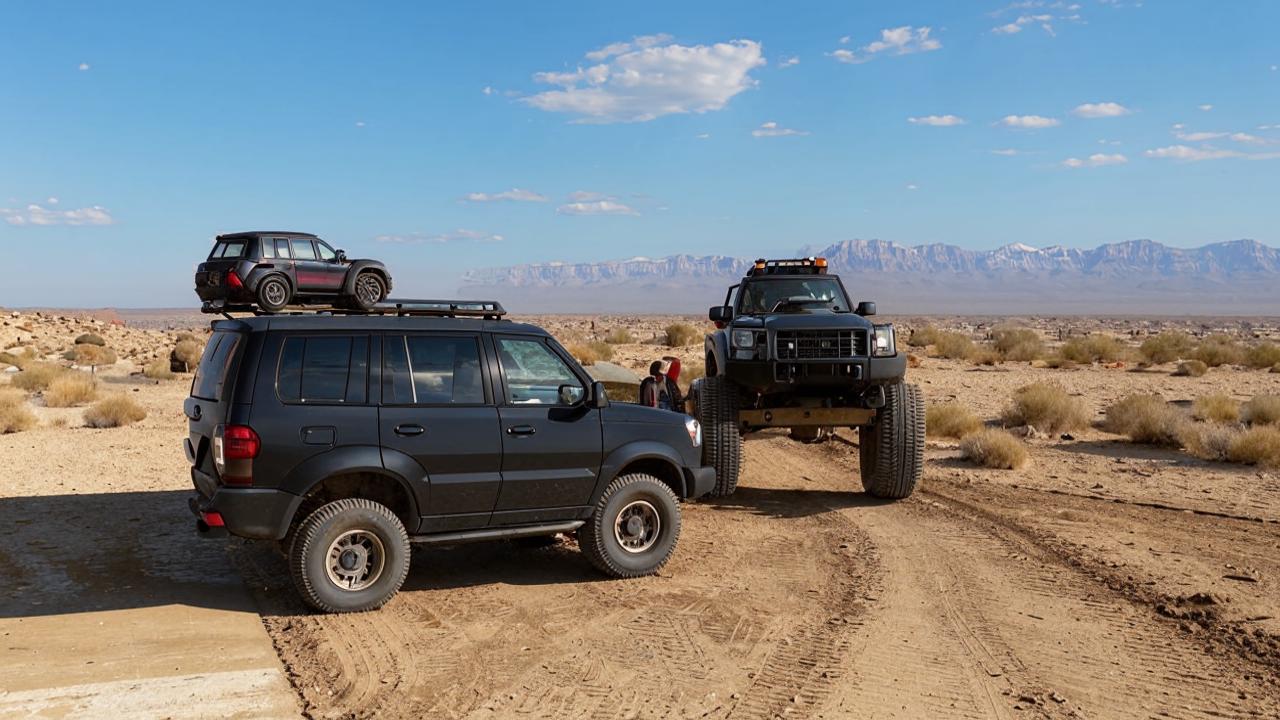
What you need to have in the car
- Suspension elevator, strictly branded (either from the manufacturer, or from proven companies), without samopalov, washers and Chinese spacers.
- Haijacks, preferably two pieces.
- Everything to equip a sleeping place in the car. Rains, storms, sandy winds, overnight stays in/at parking lots – all this is a normal practice on a trip.
- Canisters with all liquids – oil, antifreeze, dextron, hydraulic fluid, plus fuel canisters. About fuel canisters – I advise old German/Soviet steel ones (just check that the valve and rubber bands were intact) or normal trophy flat plastic ones. Small red canisters are an emergency case. There are a lot of complaints about them, from slimy threads and bad dimensions to the impossibility of normal fastening.
- A set of tools for both mm and inch, necessarily with torexes.
- Dynamic sling and pulling rope (two of them are better). Two of my own cars have been dragged a couple times “on a tie-down”.
- CB+LPD radio. Truckers (channel 15) will always be able to help in an emergency, plus a huge number of airports and abstract duty stations are on the phone.
Part two will be about what clothes to take and how to eat on this trip. Someone will hopefully find this information useful.



